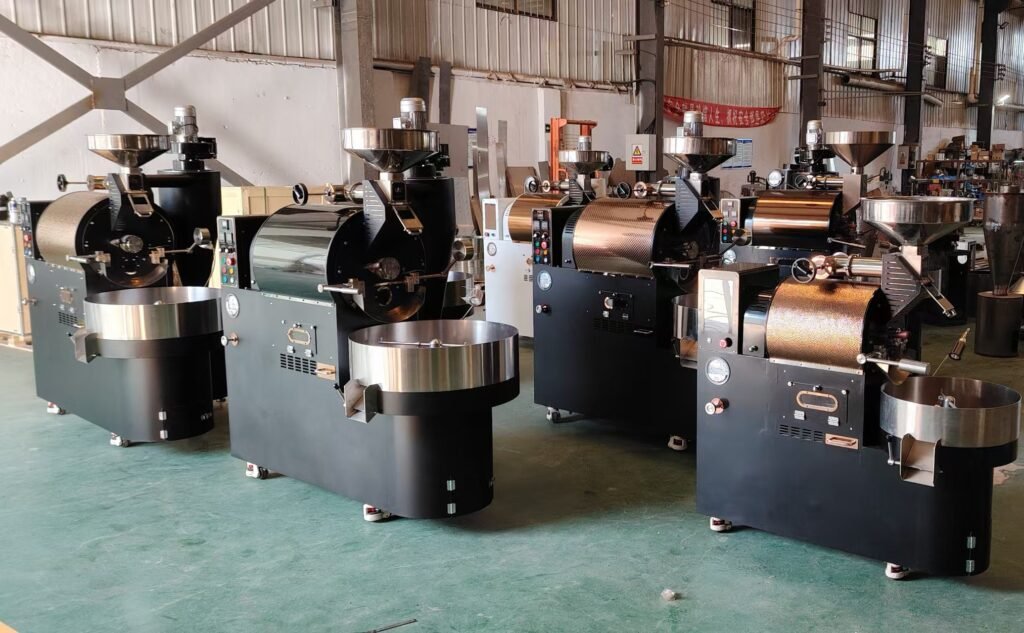Essential Daily Cleaning Areas for Coffee Roasters: Maintaining Flavor Integrity Through Targeted Care
Regular cleaning of a coffee roaster is vital to prevent flavor contamination and ensure operational efficiency. While deep cleaning may occur monthly, daily attention to specific components minimizes residue buildup and mechanical wear. Below are the critical areas requiring daily maintenance.
1. Drum and Internal Surfaces
The roasting drum is the heart of flavor development, but it’s also a magnet for oils and chaff. After each roast, use a soft-bristle brush to dislodge stuck particles from the drum walls. For stubborn residue, dampen a lint-free cloth with food-grade isopropyl alcohol (70% concentration) and gently wipe the interior. Avoid harsh chemicals, as they can leave residues that alter coffee profiles.
Cooling Tray and Agitator Blades
Beans release chaff as they cool, which accumulates in the tray and between agitator blades. Use a vacuum with a narrow nozzle attachment to remove loose chaff. For caked-on layers, lightly spray the area with water and scrub with a non-abrasive pad. Ensure blades rotate freely; if resistance is felt, disassemble and clean the pivot points with a toothbrush.
Exhaust Ducts and Chaff Collectors
Exhaust systems trap fine particles that can ignite if neglected. After every session, inspect the duct’s entry point for blockages. Wear gloves to manually remove clumps of chaff from the collector’s screen. For ducts with removable filters, rinse them under low-pressure water and air-dry completely before reinstalling.
2. Thermal and Airflow Components
Heat distribution relies on unobstructed airflow. Dust and chaff in these areas reduce efficiency and increase fire risks.
Burner Assemblies and Heat Exchangers
Gas burners develop soot over time, which insulates flames and causes uneven heating. Use a wire brush to clean burner ports daily, ensuring each hole is clear. For electric models, inspect heating elements for carbon buildup; gently scrape off deposits with a plastic scraper.
Cooling Fan Intake Grilles
Fans draw in ambient air to cool beans, but they also pull in dust. Before each roast, wipe the grille with a damp cloth. If equipped with a removable cover, soak it in warm soapy water and scrub with a soft brush. Blocked grilles reduce airflow by up to 50%, leading to overheated batches.
Temperature Probe Wells
Probes measure bean core temperature, but oil residue can insulate them, causing inaccurate readings. After cooling, insert a cotton swab dipped in alcohol into the probe well to remove buildup. Rotate the probe during cleaning to ensure full contact with the swab.
3. Mechanical and Moving Parts
Friction points wear faster when dirty, leading to costly repairs.
Drum Bearings and Axles
Bearings enable smooth drum rotation. Dust and chaff can seep into seals, causing grinding noises. Wipe the axle ends with a dry cloth after each use. If the drum feels stiff, apply a drop of food-grade silicone lubricant to the bearing housing.
Chain Drives and Gear Systems
Conveyor chains and gears transfer motion but collect debris. Use a rag to wipe down chains, focusing on link joints. For gears, blow compressed air into crevices to dislodge particles. Check tension regularly; loose chains slip, while overtightened ones strain motors.
Control Panel and Touchscreens
Roasters with digital interfaces accumulate fingerprints and dust, which obscure displays. Use a microfiber cloth to clean screens and buttons. Avoid spraying cleaners directly onto panels; instead, dampen the cloth and wipe gently. For stubborn grime, a 50% water-vinegar solution works effectively.
4. Environmental Safety Checks
Neglecting surrounding areas can compromise both equipment and workspace.
Floor and Wall Surroundings
Chaff and dust settle on floors, creating slip hazards. Sweep the area after each roast and mop with a neutral cleaner. Inspect walls near exhaust vents for oil stains; wipe them down to prevent pest attraction.
Fire Extinguisher and Safety Equipment
Roasters operate near open flames. Verify that fire extinguishers are accessible and pressure gauges are in the green zone. Test smoke detectors monthly and replace batteries annually. Keep a metal container nearby for disposing of hot chaff safely.
By prioritizing these areas daily, roasters maintain consistent flavor output while extending equipment lifespan. Cleanliness directly impacts roast quality—even minor residue can alter acidity or sweetness in finished batches. Implementing these steps as part of a shutdown routine ensures reliability and safety in high-volume environments.


